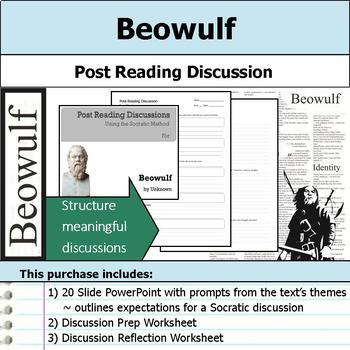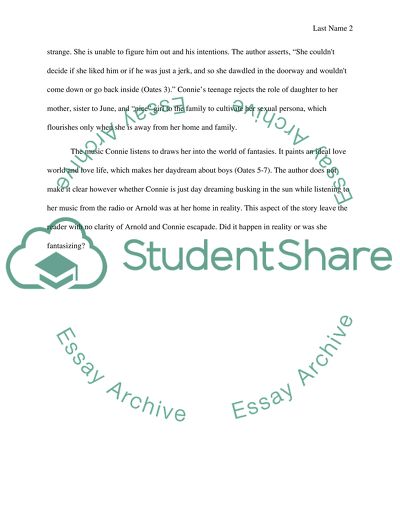
Jun 27, · Nick Paine 3/11/13 Beowulf Literary Analysis In the poem Beowulf, the issue of whether or not this particular period is more barbaric or is more civilized. The author of Beowulf is trying to present a certain message in the poem. The message that can be pulled from Beowulf is that even within a society of thought to be malicious and barbaric, there is still room for it to be Estimated Reading Time: 3 mins Nov 29, · First of all Beowulf displays the four pillars of Anglo-Saxon which include bravery, loyalty, generosity, and friendship (Element of Literature, “The Anglo-Saxons” 2). He also gets something of great value for himself. Beowulf also gives the people a sense of safety and security. His intelligence is also another way his heroic behavior is shown Sep 19, · Logan Mullins CP English IV Final Draft 30 September Beowulf Literary Analysis One might believe that Beowulf is nothing but a greedy, self-centered man with an oversized ego. When one looks closely and truly pulls apart the story of Beowulf they see Beowulf for he truly is, and selfish is not anywhere in the realm of what this man really is
Literary Analysis (Beowulf)
Despite its popularity during the previous few centuries, Beowulf, written by some anonymous author, is stated to have emerged between the period from AD to AD. The whole manuscript is spread over a few pages comprising 3, lines.
The storyline presents a Geats heroBeowulf, who comes to help the Danish king, a literary analysis of beowulf, Hrothgar, to fight against the monster, Grendel. However, when he gets old, he hears about a dragon and finally dies of wounds when battling and ultimately killing the dragon.
The poem celebrates the victories as well as mourns the death of the brave king. The storyline shows a Danish King, Hrothgar, from the linage of Shield Sheafson, a royal family head, living a prosperous and happy life with his subjectsenjoying great feasts in his Heorot, a mead-hall, when a plague strikes his subjects. It is a horrible monster or demon, Grendel, who appears and kills whom he sees at night.
He has spread his reign of terror in the entire kingdom, making people stay ducked at their homes, forcing them to empty the hall, a literary analysis of beowulf. However, a young Geatish prince, Beowulf, happens to hear about this demon and reaches Hrothgar to offer his help to compensate for the assistance that he offered to his father when he was seeking refuge. Having great regard for his father, Ecgtheow, Hrothgar jumps at the opportunity and welcomes Beowulf with a great feast.
The great mead-hall is filled with his subjets to welcome the great hero but Unferth, a Danish warrior, mocks Beowulf for having won recognition without having executed any exploit.
Boasts of Beowulf about his achievements, however, win him praise from the subjects. Finally, Grendel strikes during this pandemonium but finds Beowulf wrestling with the demon instead.
With a torn arm left behind, Grendel escapes to the swamp. Feeling boundless joy, Hrothgar profusely praises Beowulf and showers loads of gifts on him. A great feast is arranged in his honor with musicians displaying their skills.
With his forged sword, he finally slays her and finds the dead body of the demon, Grendel. He also brings his head as a sign of his victory. The Danes celebrate this final victory with great pomp and show. These two great exploits make Beowulf a household name in Denmark. He, however, has to depart to his land saying a sad adieu to King Hrothgar who is not willing to allow the warrior to depart, though, Geatland is calling him.
Therefore, he returns to his land to unite with his people to help them live a prosperous life, leaving the royal couple to narrate his exploits. He then gives all his collection of treasures and gifts to the king who rewards him profusely for making Geatland a land of great warriors.
During the time, wars ensue and Hygelac gets killed battling the Shylfings, leaving only Beowulf to take the throne. Ruling for half a century and making his country prosperous and happy, Beowulf finally accepts the onslaught of age when he hears another plague that is of a dragon awakened in some cave by a thief. Seeing the destruction of the Geats, Beowulf again girds up his loins and battles the dragon in which he himself receives severe injuries, dying a bit later.
The writing style of the epic, Beowulf, by Seamus Heaney is quite plain and simple. The language, however, is rich with different types of images and other literary devices. Yet, it preserves its grandiose style that is fit for such classical epics.
Antagonist : Beowulf shows Grendel, his mother, and the dragon as antagonists of the epic as they kill the people mercilessly just to satisfy their instincts.
Allusion : There are various examples of allusions given in a literary analysis of beowulf epic such as;, a literary analysis of beowulf. These two allusions are the biblical allusions taken from the religious setting to shed light on the existing setting.
However, the third one is a historical allusion. Conflict : The conflict in the epic, Beowulf, a literary analysis of beowulf, is between the good and evil on one level and between the representative characters on the other level.
Beowulf stands for good and Grendel, his mother and the dragon stand for evil. Characters: Beowulf presents static characters. The reason is that all the characters stay almost the same from the first to the last, representing either good or evil such as Beowulf, Grendel, the dragon, Hygelac, and Hrothgar.
Climax : The climax occurs when Beowulf fights the demon and his mother. A literary analysis of beowulf : The epic shows the following examples of foreshadowing. Hyperbole : Hyperbole or exaggeration occurs in the epic at various places such as. Imagery : Imagery means using images such as given in the novel, a literary analysis of beowulf. For example. Litotes : The epic shows the example of litotes. Metaphor : Beowulf shows good use of various metaphors such a literary analysis of beowulf. These examples show that Onela is compared to balm, Hrothgar to the helmet, and bones to recoils.
Mood : The epic, Beowulf, shows festive mood and enjoyment in the beginning but then it turns out tragic in the middle and the end. Motif : Most important motifs of Beowulf are the monster, the oral traditions, Heorot, the sea, and the dragon. Narrator: Beowulf has been narrated by a third-person omniscient narrator.
Personification : Beowulf shows the use of personifications such as. Point of View : The epic has been narrated from the third person point of view based on the views of the omniscient narrator. Protagonist : The Geatish hero, Beowulf is the protagonist of the epic. The epic starts with his entry in Denmark and moves forward as he fights the demon, his mother, and finally the dragon until his death.
Rhetorical Questions : The epic shows good use of rhetorical questions at several places. This example shows the use of rhetorical questions posed but different characters not to elicit answers but to stress upon the underlined idea. Setting : The setting of the epic, Beowulf, spreads over Denmark and then some areas of Geatland.
Simile : The epic shows a good use of various similes such as. Introduction of Beowulf Despite its popularity during the previous few centuries, Beowulf, written by some anonymous author, is stated to have a literary analysis of beowulf between the period from AD to AD.
Related posts: Beowulf Characters Beowulf Themes Beowulf Quotations.
Study Guide for Beowulf
, time: 20:10Beowulf Literary Analysis - blogger.com

This is a literary analysis for Beowulf. In this analysis, I will be writing about the historical context, world view, and psychological context within the story. Beowulf is an old English poem written by an Anglo-Saxon poet. The story consists of a hero of the Geats, who comes to the aid of Hrothgar, the king of the Danes, who’s mead hall has been attacked by a monster by the Jun 27, · Nick Paine 3/11/13 Beowulf Literary Analysis In the poem Beowulf, the issue of whether or not this particular period is more barbaric or is more civilized. The author of Beowulf is trying to present a certain message in the poem. The message that can be pulled from Beowulf is that even within a society of thought to be malicious and barbaric, there is still room for it to be Estimated Reading Time: 3 mins The history of literary criticism and analysis of 'Beowulf' is heavily influenced by J.R.R. Tolkien, who convinced scholars to view it not just as a historical document but as a great work of

No comments:
Post a Comment